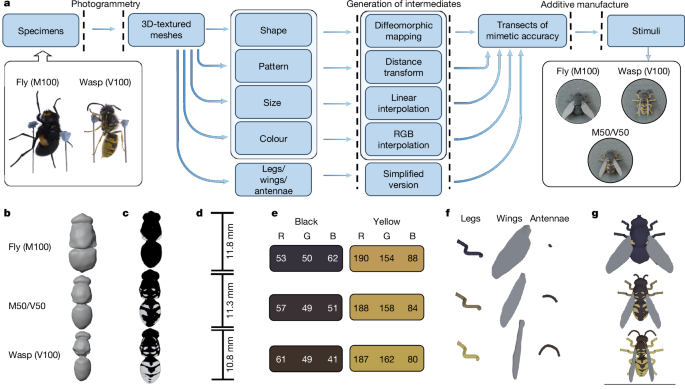
"Batesian mimics gain protection when predators treat them as defended 'models' despite being palatable prey. Increasing resemblance should give a higher probability of misidentification."
"Mimics vary greatly in accuracy, raising the question of what stops ever-greater mimetic accuracy from evolving. Numerous theoretical explanations propose functional trade-offs affecting mimetic appearance."
"Expected outcomes of selection on visual adaptations depend on the specific characteristics of signallers and receivers in each study system, impacting how visual information is interpreted."
"Manipulating existing phenotypes, such as painting or creating artificial replicas, allows researchers to explore the adaptive landscape, revealing insights into the fitness of phenotypes."
Batesian mimicry involves palatable prey resembling defended models to avoid predation. The effectiveness of mimicry relies on the degree of resemblance, which varies among mimics, leading to questions about the evolution of accuracy. Theoretical frameworks suggest trade-offs and relaxed selection may limit mimic accuracy. Selection outcomes depend on the interaction between signallers and receivers, influencing how visual stimuli are interpreted. Manipulating phenotypes can circumvent limitations in studying these adaptive landscapes, allowing for a better understanding of evolutionary fitness in varying contexts.
Read at Nature
Unable to calculate read time
Collection
[
|
...
]